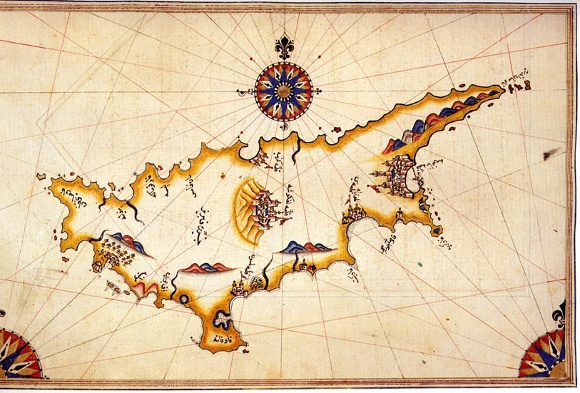Othello Contents
Changes of location and pace
Geographical change
Geographically, the play takes place in two completely different places, the well-established city-state of Venice, Italy, and the vulnerable island of Cyprus, which was a colony of Venice at the time Shakespeare set the story. Cyprus is not seen as a strange or threatening environment, but merely a backdrop against which the main events can occur away from the motherland of the main characters. But away from their homes and families in Venice, the setting also makes it easier for the tricks and treachery of Iago to prevail, the foolish vanity of Roderigo to go unnoticed and the violent jealous rage of Othello to go unchecked.
The greater heat of Cyprus might exacerbate the sudden change in Othello’s mood and the regrettable decisions he makes. But the lack of established structure aids the tragedy too. Back in Venice, might not Brabantio have reassured Othello of his daughter’s purity? Might not other nobles or army officers have spoken up for Cassio or against Iago? Might not Roderigo and Bianca have been put in their rightful place in society? And might not Othello’s rage have been censured by his peers, as indeed Lodovico does scold Othello in Act 4 Scene 1? In Cyprus there are no counterbalances against which the behaviour of the protagonists can be checked.
 The shifts of time in Othello
The shifts of time in Othello
The early scenes of the play work out almost in ‘real’ time. The voyage out to Cyprus seems no longer than a day, particularly since, when Othello and Desdemona are reunited, they want to continue their interrupted ‘wedding night’. But as the action of the play carries on into Act 3, there seem to be discrepancies which indicate that some time has lapsed, even though the action appears seamless. For example:
- Cassio has had time to establish a relationship with Bianca who complains when she hasn’t seen him for a week
- Iago has repeatedly asked Emilia to acquire Desdemona’s handkerchief – who had only started serving her mistress the day before
- Iago says he has had several nights to observe Cassio in their shared quarters – which would only have occurred in a cramped billet on the island
- Othello imagines that Desdemona has had time to sleep with the whole platoon, let alone Cassio – yet dramatically when would she have had the chance?
- Desdemona asks for her wedding sheets to be put on the bed – yet they were likely still to have been there if it was the following day.
It is likely therefore that before Act 3 opens, everybody has been on Cyprus for at least a couple of weeks. However, Shakespeare keeps the momentum of action flowing as:
- That is the only way in which Iago’s scheming can be effective
- The tragedy can gather to a climax in which there is legitimately no space for reflection or rational assessment
- It keeps the audience, who knows the machinations behind the action, in a state of tension, given that they have no opportunity to halt the unfolding calamity.
Energy and stillness
Shakespeare creates drama in Othello by the way in which he juxtaposes different sorts of action, different characters and the pace at which scenes should be played. Act 1 Scene 1 starts with mutterings in the dark which lead to the hue and cry of Scene 2 and the resolution of Brabantio’s drama in the council room of the Duke (Scene 3). But next, the danger of war becomes the focus for action, with the sea storm adding to the tension, until that too is resolved by the end of Act 2 Scene 2.
Shakespeare places scenes of turbulent passion next to calm, thus the harmony of peace and victory (Act 2 Scene 2) is shattered by the officers’ brawl and its aftermath, but Iago’s soliloquy restores the idea of control, despite the subsequent complaints of Roderigo (Act 2 Scene 3).
The pattern becomes more pronounced as the tragedy unfolds:
- Othello’s desperate loss of control in Act 4 Scene 1 is placed alongside the levity of Cassio’s musings on Bianca
- The innocence of Desdemona preparing for bed (Act 4 Scene 3) is framed by Iago’s plot with Rodrigo against Cassio (Act 4 Scene 2), and its execution (Act 5 Scene 1)
- The long final scene continually fluctuates between scenes of rising and falling action, the personal and the public, reflection and activity.
